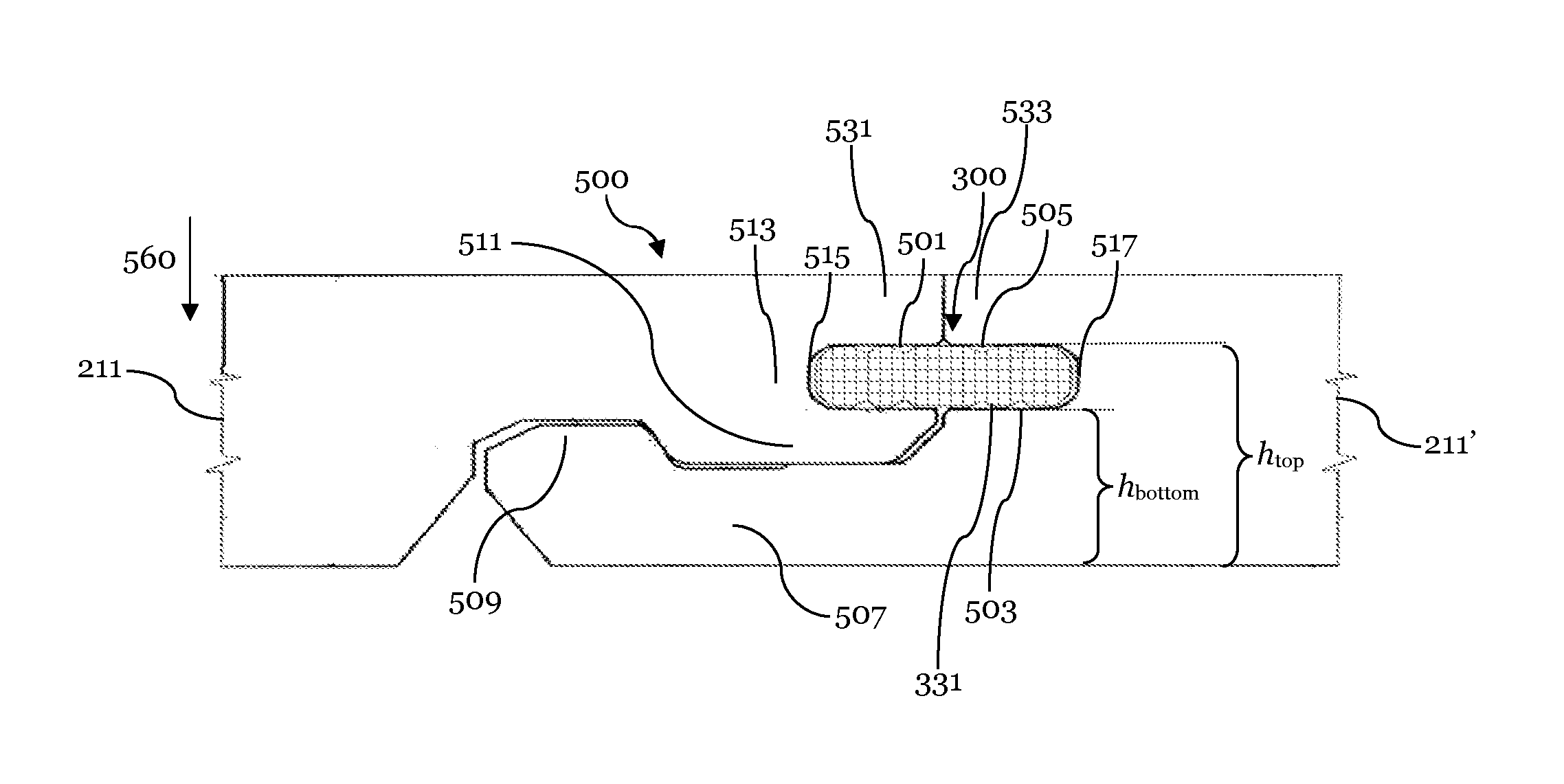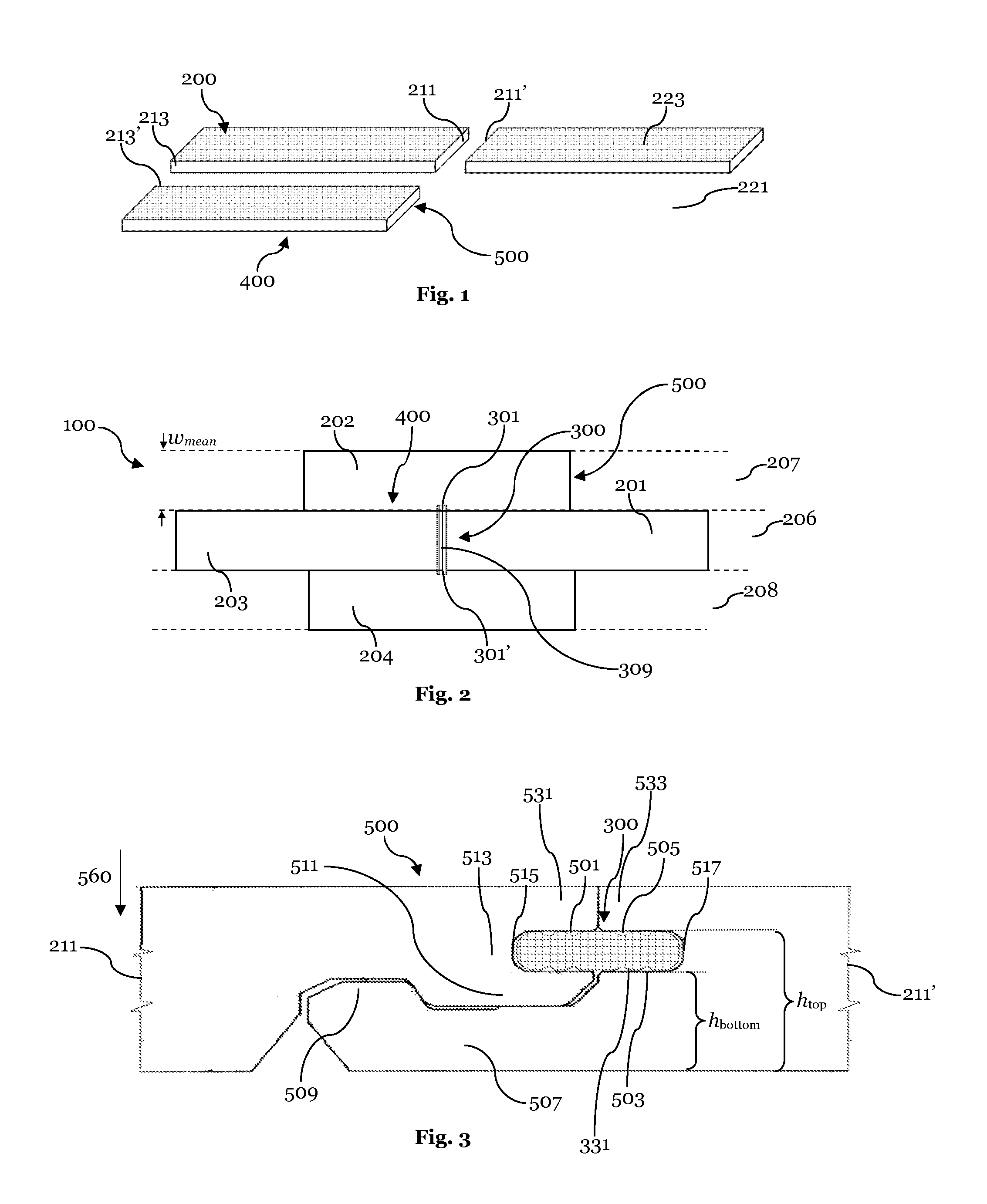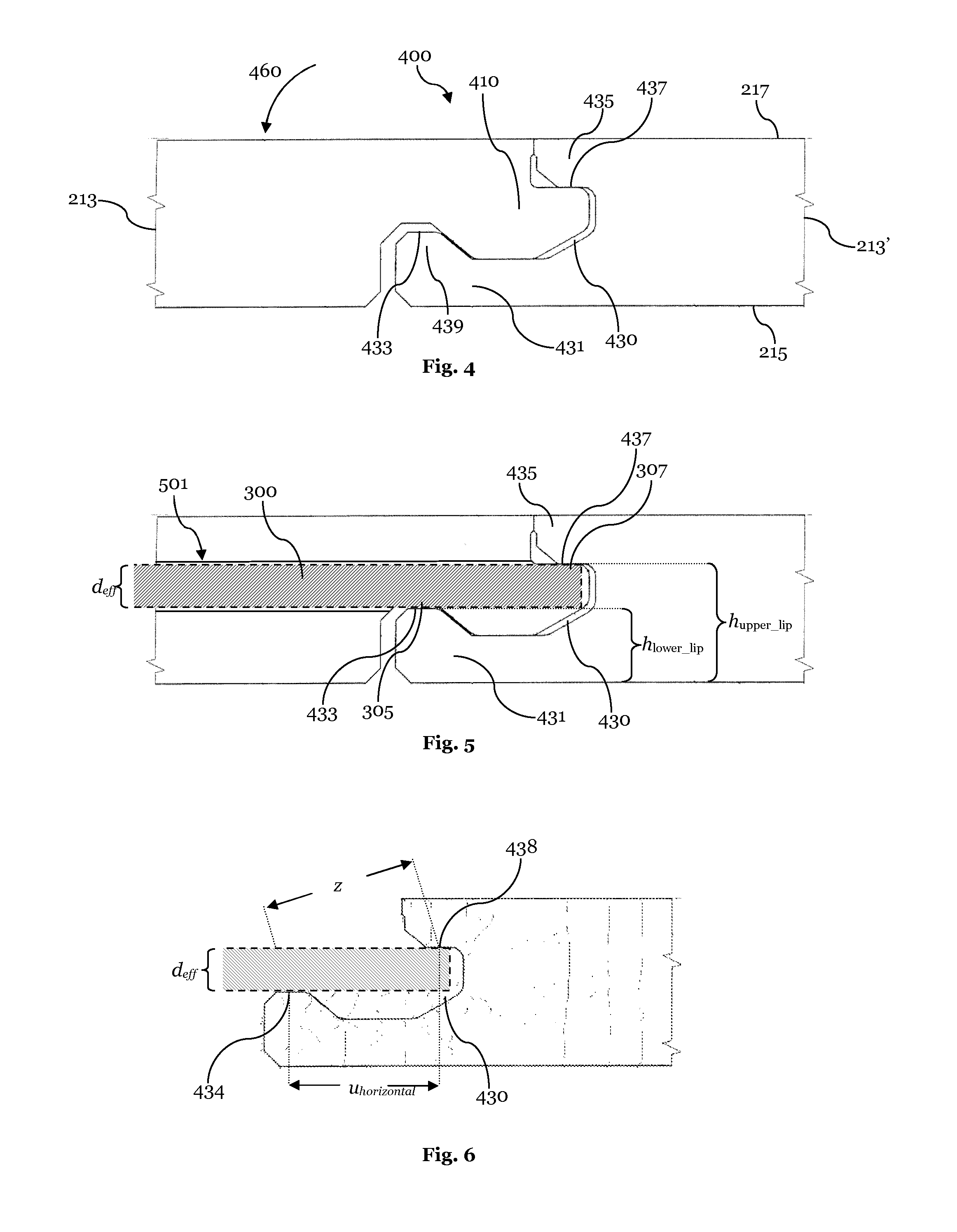Surface covering comprising laminate panels and an extraneous locking element
a technology of laminate panels and locking elements, applied in the field of surface coverings, can solve the problems of instability at the interconnection zone where three connected panels are located, the corners of the connected panels cannot be locked, etc., and achieve the effects of reducing friction, reducing the friction of insertion, and reducing the friction
- Summary
- Abstract
- Description
- Claims
- Application Information
AI Technical Summary
Benefits of technology
Problems solved by technology
Method used
Image
Examples
Embodiment Construction
[0035]In the following, the invention is described exemplarily with reference to the enclosed figures in which
[0036]FIG. 1 shows a schematic view of three panels laid in a common plane, being not connected to each other;
[0037]FIG. 2 is a schematic top view of a surface covering, whereby four panels are exemplarily shown connected to each other;
[0038]FIG. 3 shows a cross section of transverse coupling means in coupled condition, whereby an extraneous locking element is inserted into a channel formed by the transverse coupling means;
[0039]FIG. 4 shows a cross section of longitudinal coupling means in coupled condition;
[0040]FIG. 5 is a schematic cross sectional view showing the longitudinal coupling means of FIG. 4 in coupled condition, whereby an extraneous locking element is shown inserted into a groove of the longitudinal coupling means;
[0041]FIG. 6 shows the groove of FIG. 5 and the inserted extraneous locking element of FIG. 5;
[0042]FIG. 7 shows details of the groove of FIGS. 5 a...
PUM
| Property | Measurement | Unit |
|---|---|---|
| height | aaaaa | aaaaa |
| height | aaaaa | aaaaa |
| height | aaaaa | aaaaa |
Abstract
Description
Claims
Application Information
 Login to View More
Login to View More - R&D
- Intellectual Property
- Life Sciences
- Materials
- Tech Scout
- Unparalleled Data Quality
- Higher Quality Content
- 60% Fewer Hallucinations
Browse by: Latest US Patents, China's latest patents, Technical Efficacy Thesaurus, Application Domain, Technology Topic, Popular Technical Reports.
© 2025 PatSnap. All rights reserved.Legal|Privacy policy|Modern Slavery Act Transparency Statement|Sitemap|About US| Contact US: help@patsnap.com



